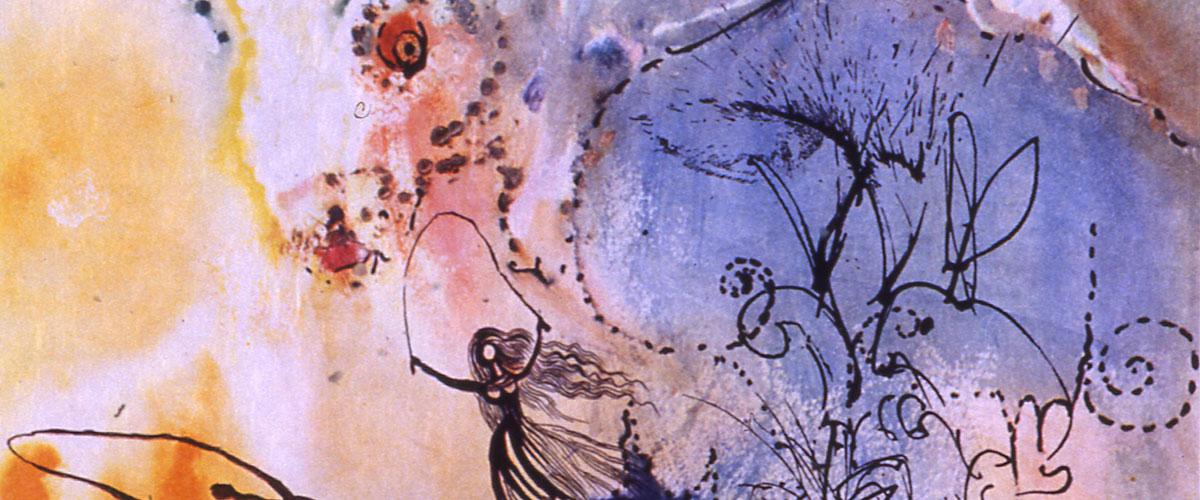On display are 85 prints from The Dalí Museum collection which are representative of multiple print suites and single prints commissioned by various publishers from 1930 to 1976. Often overlooked, prints are a major part of Salvador Dalí’s work.
Dalí broke through the boundaries of conventional lithography and experimented with a variety of dramatic processes to apply ink to stone, one of which is called “bulletism.” Most celebrated was his use of ink bullets or snail shells filled with printer’s ink. Dalí used a fifteenth century harquebus, a type of musket propped on a tripod, to fire bullets filled with printer’s ink at the large stones. This ink- splashed stone was run through a lithographic press leaving an impression which he called “realism of quantified spots.”
Another method Dalí employed was taking rhinoceros horns filled with French bread, soaking the bread in ink and crushing it on to the stone creating windmill strokes. He also used eggs filled with ink, gravel, and crushed sea urchin to create a dynamic effect. The combination of these lithographic effects and Dalí’s figurative drawing created this unprecedented suite of prints which have inspired art and performance for generations.
The exhibition was curated by the Dalí Museum’s senior curator, Joan Kropf.
